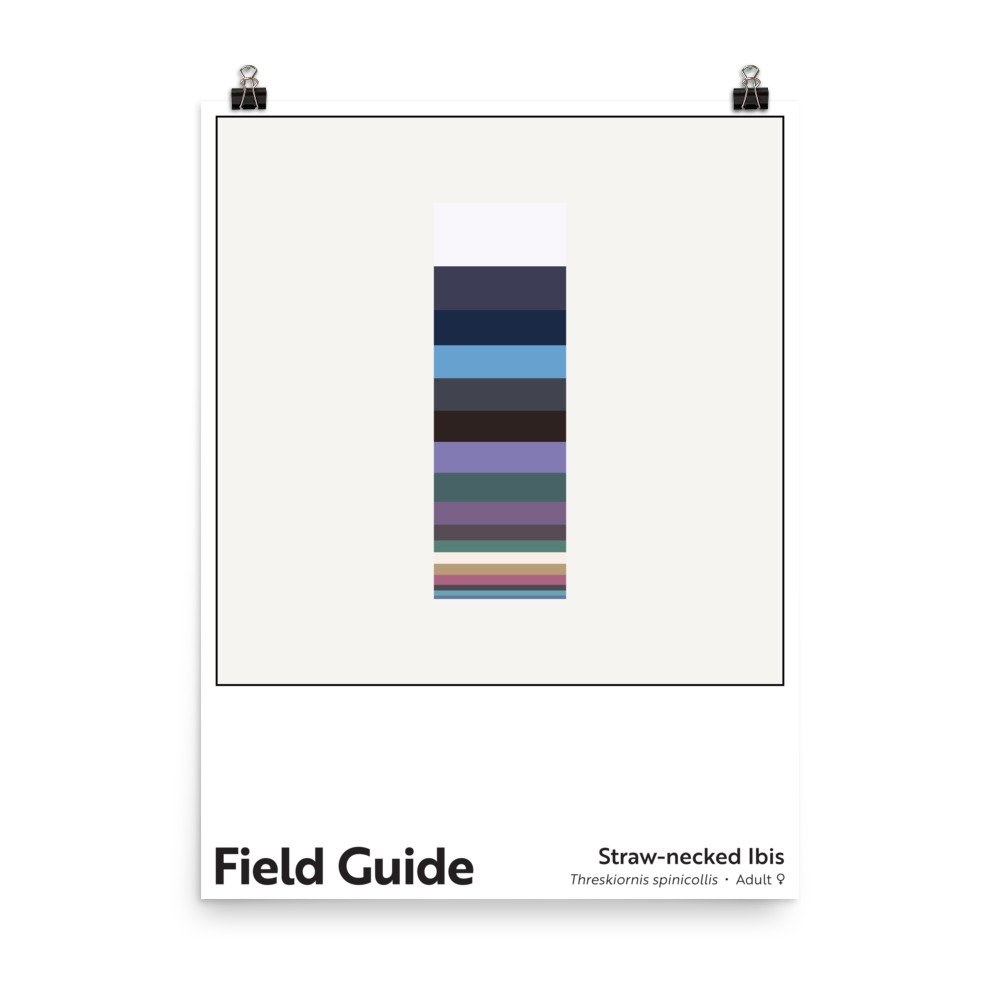Field Guide : Straw-necked Ibis (Female)
Field Guide : Straw-necked Ibis (Female)
Unlimited edition. 18 x 24 inch, museum-quality poster on matte paper.
The straw-necked ibis is named for the feathers that flare from the lower necks of many adult birds. Its scientific binomial describes the same trait, but with more dramatic flair; Threskiornis spinicollis means “sacred bird with neck thorns.” Interestingly, I noticed that many adult birds don’t show the straw color of the common name and learned that this some-do-some-don’t aspect also applies to much of the bird’s behavior. Some straw-necked ibises are sedentary, while some are migratory. Some prefer dry, open areas such as pastures and grasslands, whereas some prefer wetlands. Some nest in trees and shrubs; some nest on the ground. I wonder if all this variability factors into the species’ success – they’re the most widespread and abundant ibis in Australia.
For this color column, I looked at birds that do exhibit the straw or buff coloration on their neck feathers. Males and females appear very similar. The only major differences are that males generally have longer bills and females typically have a dark band across their upper breast, just under the neck flair. Given that the longer male bill is also a dark color, I expect a color column for the male would be almost exactly the same.
Cool straw-necked ibis tidbit: Although they feed primarily on invertebrates such as grasshoppers, crickets, and locusts, their diets also include mollusks, fish, reptiles, rodents, and amphibians. They’ve even been observed eating the toxic cane toad (Bufo marinus) ☠️🐸. To do so, they use a special technique to avoid being poisoned; they grab and throw the toad here and there, terrorizing it such that the toad releases its toxin in self-defense. Once the ibis is confident the toad has expended its toxic defense, the bird rinses the toad in a creek (to remove the toxin) before consuming it.
Note: These archival poster prints feature rich, appealing colors. I encourage customers to take care in handling them until they are framed/protected for display; the darker colors on the matte paper can be scratched. They ship rolled, so customers need to flatten them before framing (or have their framer do so).
Charitable Sales Model: Whenever one of these poster prints is purchased, a charitable contribution equal to 10% of the print’s cost (or $3.60) is made to a nonprofit working to tackle environmental or social challenges. Read more about my charitable sales model here.

